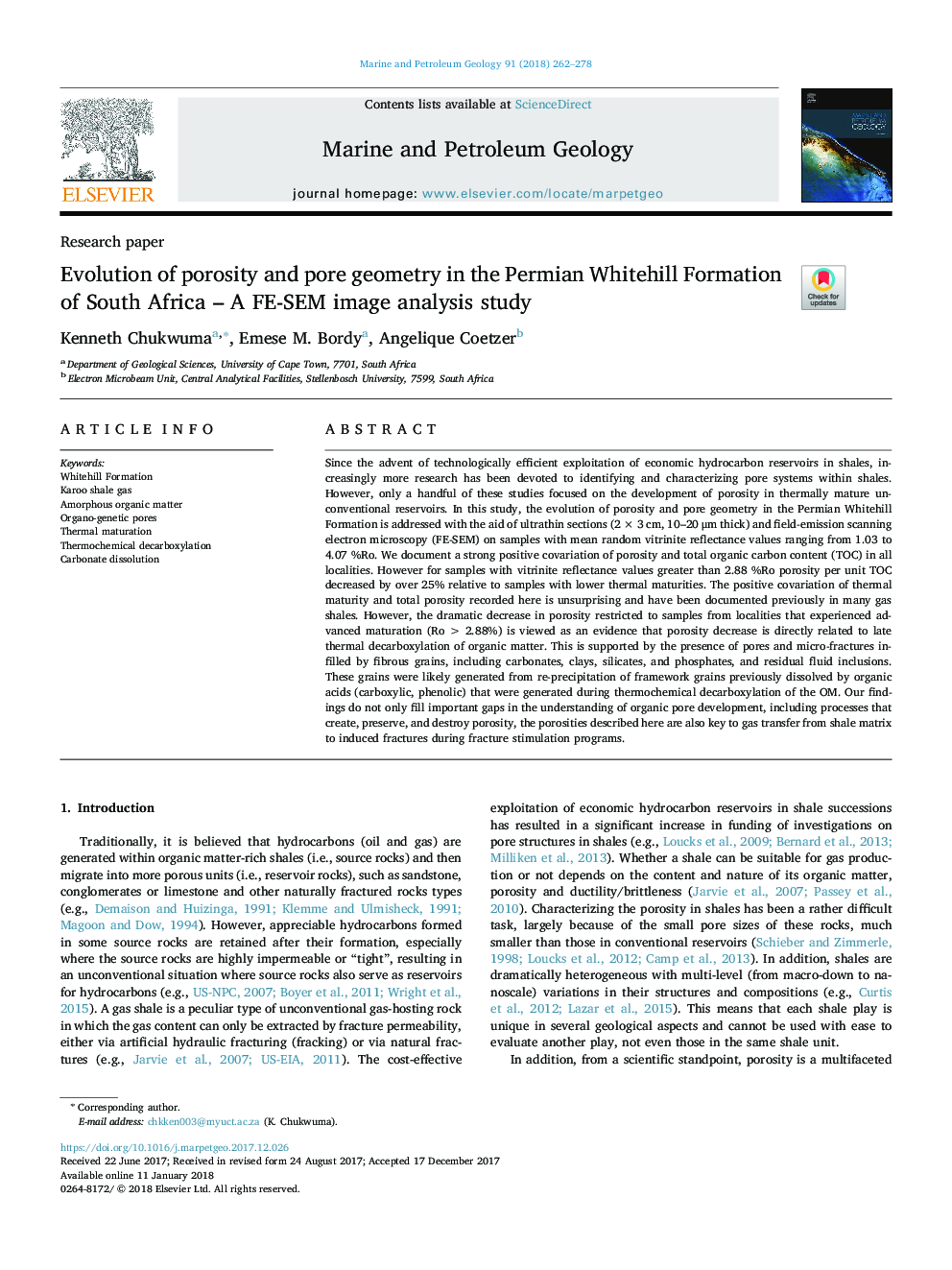| Article ID | Journal | Published Year | Pages | File Type |
|---|---|---|---|---|
| 8909180 | Marine and Petroleum Geology | 2018 | 17 Pages |
Abstract
Since the advent of technologically efficient exploitation of economic hydrocarbon reservoirs in shales, increasingly more research has been devoted to identifying and characterizing pore systems within shales. However, only a handful of these studies focused on the development of porosity in thermally mature unconventional reservoirs. In this study, the evolution of porosity and pore geometry in the Permian Whitehill Formation is addressed with the aid of ultrathin sections (2â¯Ãâ¯3 cm, 10-20â¯Î¼m thick) and field-emission scanning electron microscopy (FE-SEM) on samples with mean random vitrinite reflectance values ranging from 1.03 to 4.07 %Ro. We document a strong positive covariation of porosity and total organic carbon content (TOC) in all localities. However for samples with vitrinite reflectance values greater than 2.88 %Ro porosity per unit TOC decreased by over 25% relative to samples with lower thermal maturities. The positive covariation of thermal maturity and total porosity recorded here is unsurprising and have been documented previously in many gas shales. However, the dramatic decrease in porosity restricted to samples from localities that experienced advanced maturation (Roâ¯>â¯2.88%) is viewed as an evidence that porosity decrease is directly related to late thermal decarboxylation of organic matter. This is supported by the presence of pores and micro-fractures infilled by fibrous grains, including carbonates, clays, silicates, and phosphates, and residual fluid inclusions. These grains were likely generated from re-precipitation of framework grains previously dissolved by organic acids (carboxylic, phenolic) that were generated during thermochemical decarboxylation of the OM. Our findings do not only fill important gaps in the understanding of organic pore development, including processes that create, preserve, and destroy porosity, the porosities described here are also key to gas transfer from shale matrix to induced fractures during fracture stimulation programs.
Related Topics
Physical Sciences and Engineering
Earth and Planetary Sciences
Economic Geology
Authors
Kenneth Chukwuma, Emese M. Bordy, Angelique Coetzer,
